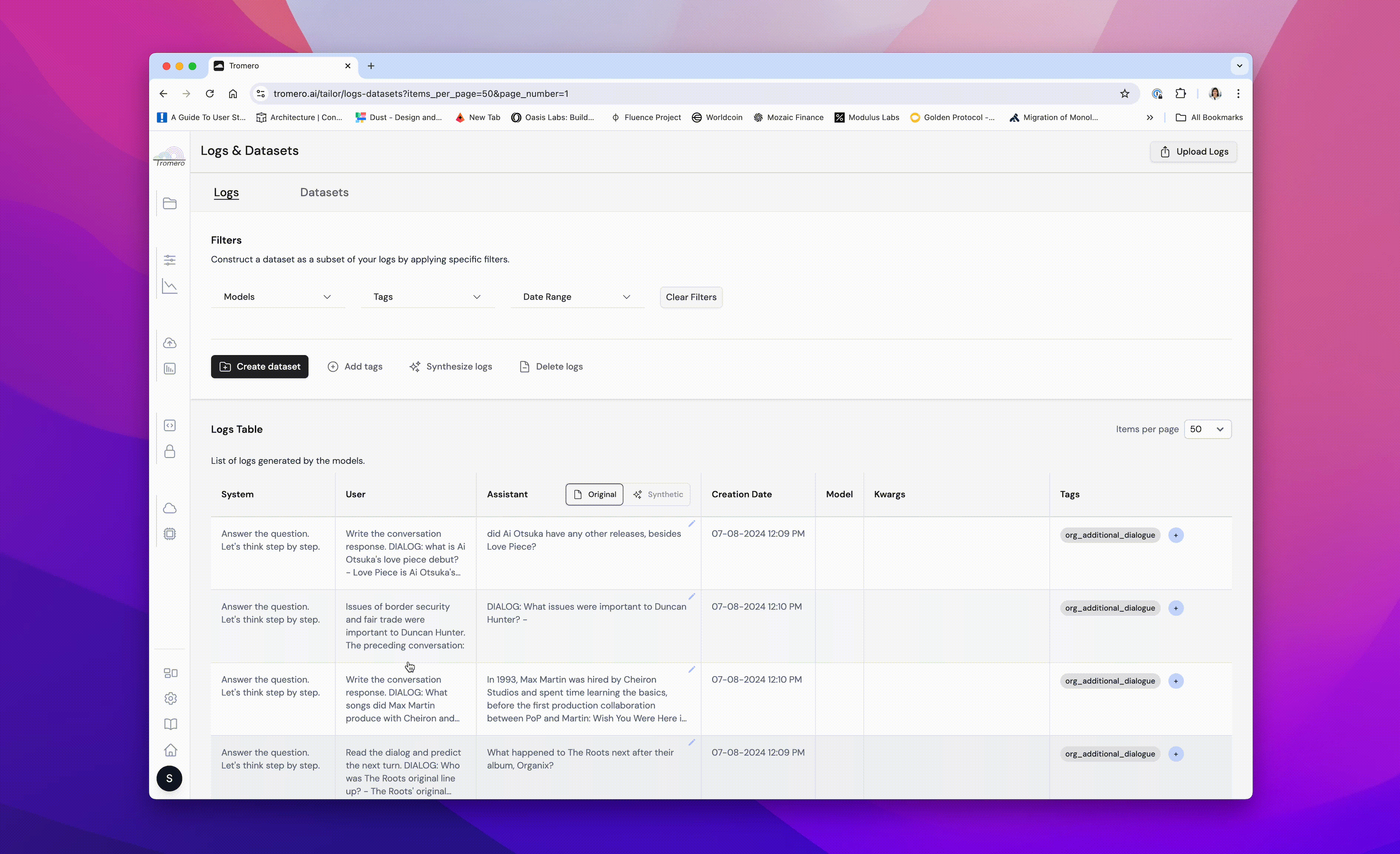Add Tags & Create Datasets
As interactions with the Large Language Model (LLM) grow, it's essential to keep data organized and easily accessible. Tromero provides two powerful features to help users achieve this: Tags and Datasets. In this section, we'll dive into the details of how to add tags and create datasets using Tromero's Python and TypeScript libraries and the Tromero CLI. We'll also cover how to create datasets from the platform and manage them from the Dataset tab.
Add Tags
Tags allow users to categorize and segment their data in real-time, making it easier to annotate and retrieve specific information for future reference. One application is tagging clients who interact with the LLM, enabling Tromero users to easily fine-tune models for specific clients at a later time.
Tags can be added dynamically as data is being recorded, offering a flexible way to categorize and track interactions.
import os
from tromero import Tromero
client = Tromero(tromero_key=os.getenv("TROMERO_KEY"))
response = client.chat.completions.create(
model = "your-model-name",
messages: [
{ role: 'system', content: 'You are a friendly chatbot.' },
{ role: 'user', content: input },
],
tags = ["super_cool_model", "client_1"],
save_data = True,
)
Create Datasets
Datasets enable users to group their data into collections that can be used for future training purposes, making it easier for users to manage and fine-tune their models.
Using the Python package or the CLI, the user can generate datasets by:
client.datasets.create_from_file(
file_path = '{file_path}',
name = 'your-dataset-name',
description = 'A brief description of your dataset',
tags = ['tag1', 'tag2']
)
When creating a dataset from the platform users can filter their data by selecting specific models, tags used and data ranges. Below is a video showing how one can create a dataset.

